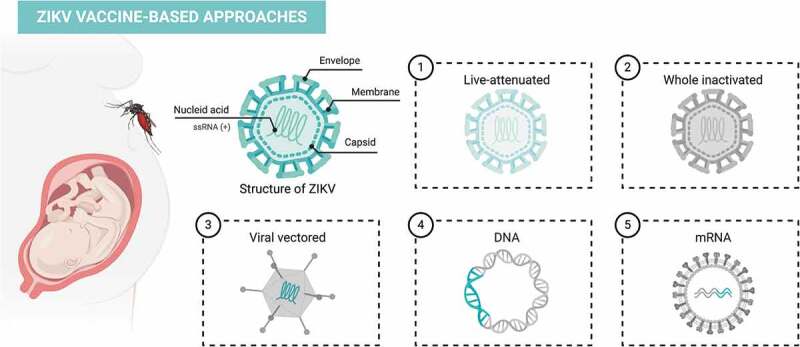Figure 1.

ZIKV vaccine-based approaches
(1) Live-attenuated vaccine: in this approach, the virus is attenuated by different methods and loses its effectivity to replicate and promote disease. The live-attenuated virus induces a potent immune response, but despite of being active the virus in the formulation is not able to induce sickness in an immunocompetent individual. The attenuated vaccine usually guarantees long-term protection and only requires a single dose, for example, in the widely described YF vaccine. (2) Whole inactivated: the virus becomes noninfectious using chemical agents such as formalin, β-propiolactone or heat; therefore, the virus is unable to cause disease nor to infect the cells or replicate. (3) Viral vector: viral vectors are genetically engineered viruses without pathogenicity, that retains their capacity to infect host cells but not causing any disease. Through genetic engineering techniques, it is possible to add antigens of interest into the genetic material of the virus. There are many viral vectors like adenovirus and vaccinia virus. (4) DNA vaccine: this vaccine is based on delivery of genes encoding a specific antigen that is subsequently transcribed and translated in proteins by host cells. Furthermore, DNA vaccines are able to induce cellular and humoral immune responses safely, with low cost and are easily manufactured. (5) mRNA: as DNA vaccines, the strategy of vaccination with mRNA can induce a potent cellular and humoral immune responses. Figure created with BioRender.com.
